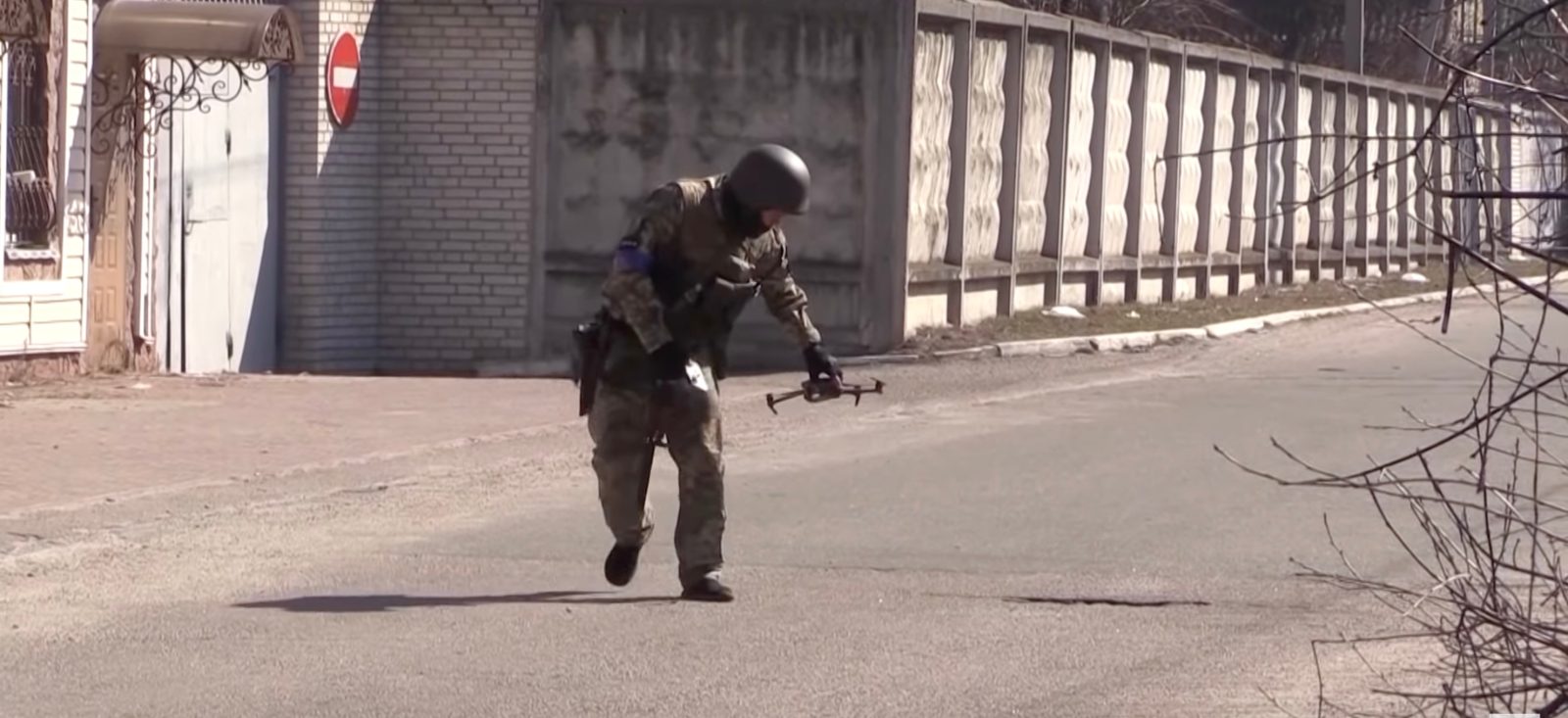
Despite the long and often controversial use of military UAVs in wars in Afghanistan, Iraq, and Syria, the prevalence and performance in Ukraine of drones – this time, the consumer variety – have been both a surprise and often determining factor in local forces repelling invading Russian forces. Indeed, some experts now believe the results of store-bought drones as well as military-grade craft are forcing reconsideration of decades old military strategies about waging war.
There has been no shortage of coverage of drone manufacturers like Aquiline and Teal contributing their specialized craft for use by Ukrainian emergency, rescue, and defense units. Consumer UAV vendors have also donated possibly thousands of brand name drones to Ukraine government agencies, while individuals around the globe have raised money to purchase and deliver countless more in the effort to thwart the Russian onslaught.
Those craft flowing in from abroad have been matched or more by Ukrainians donating or piloting their own drones, following the Defense Ministry’s appeal after the invasion began for citizens to fly their UAVs in the country’s defense. Together, both old and newly arriving drones have been used for critical delivery, search and rescue, surveillance, intelligence-gathering, and even Molotov cocktail-dropping by Ukraine forces.
Those small drones have significantly complimented military-grade UAVs provided by foreign governments, or contributed by defense companies themselves. Even more critical have been the often devastating strikes carried out by Turkish-built Bayraktar TB2 – one of which may well have delivered the Ukraine anti-ship missiles that last week destroyed the Russian flagship Moskva.
That two months of effective aerial activity in an invasion Russian planners thought they’d complete in just days, says former Navy fighter pilot Mark Bathrick, is now forcing military experts to take a cold, hard look at the basic strategies they’ve relied on in war preparations for decades.
“It’s unfortunate that we have to have this situation providing this example, but I do think it tells us we may be seeing a major change in the nature of warfare,” says Bathrick, who recently retired as the Department of the Interior’s (DOI) Office of Aviation Services (OAS), where he assembled and orchestrated the increasingly diversified use of the world’s largest fleet of non-military UAS. “That certainly the case in terms of what air dominance means any more, and how you achieve that.”
That’s now a more complex concept, Bathrick says, due to the multiplication of the numbers and diversified mission capacities of drones – an evolution he oversaw at DOI deploying the craft for public service uses including surveying, gathering scientific data, or fighting fires. The expansion of functionalities and objectives that involved – and which has more recently embraced by business, researchers, and hobbyists around the globe – is now being demonstrated in the defense of Ukraine. And that, Bathrick says, is forcing a re-evaluation of long-standing military strategies that he himself was taught as a Navy pilot.
“As a fighter pilot, the primary mission was air superiority, so it’s fascinating for me to see the traditional way of going in and taking out the eyes and the ability to launch fighters – taking out runways, fuel facilities, etc. – being undone in Ukraine by drones,” Bathrick says. “That includes small drones, which have become something like a militia weapon – like the Minute Men. You can bomb all the runways in Ukraine, but you can’t get all the roads, all the soccer pitches, all the parking lots. And those are all drone pilots need – and not even that, unless you have a fixed-wing drone.”
Because of the ways countless consumer drones have complimented military-developed UAVs in allowing Ukraine to confound the far-better equipped Russian Army, Bathrick believes the current activity in the country’s skies will change the way future conflicts are planned, no matter how this one turns out.
“This has been a big wake-up call to many militaries,” he says. “The tide has turned to the defenders, with drones being used in some cases to attack, but also to inform people of how to move on the ground. It’s very similar to the way we used them at DOI to direct firefighters on the ground from what we saw from the air. Moreover, the commercial drones often have better and more diverse sensor payloads, require almost no maintenance, are easier teach people to use, and are around 1/100th the cost or less than similar military drones.”
FTC: We use income earning auto affiliate links. More.



Comments